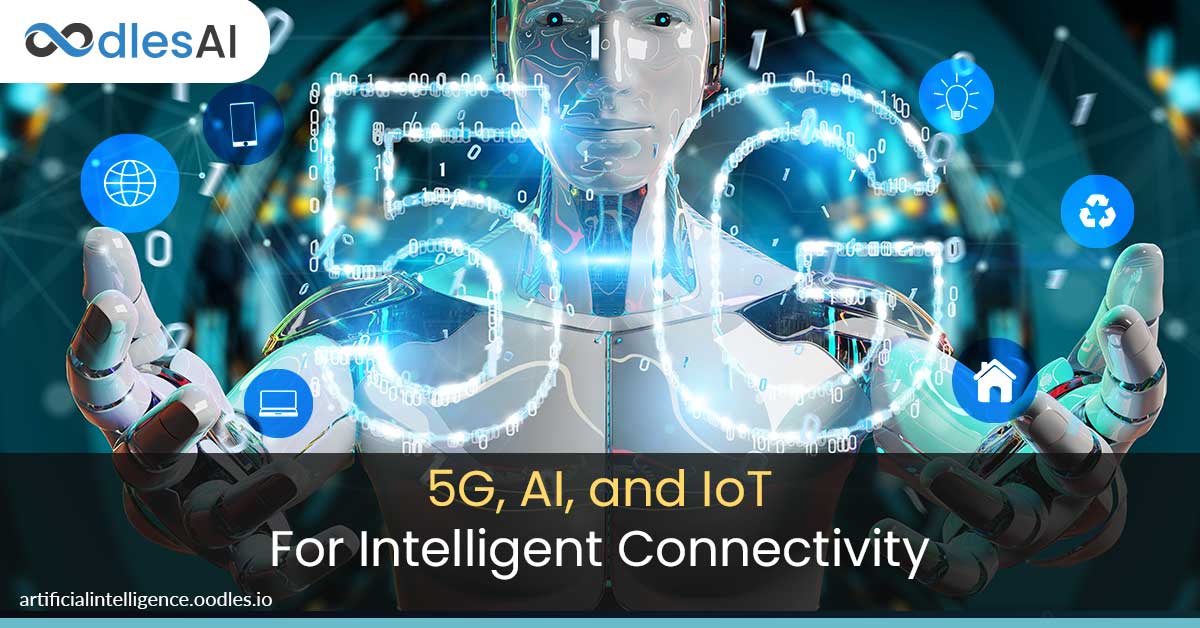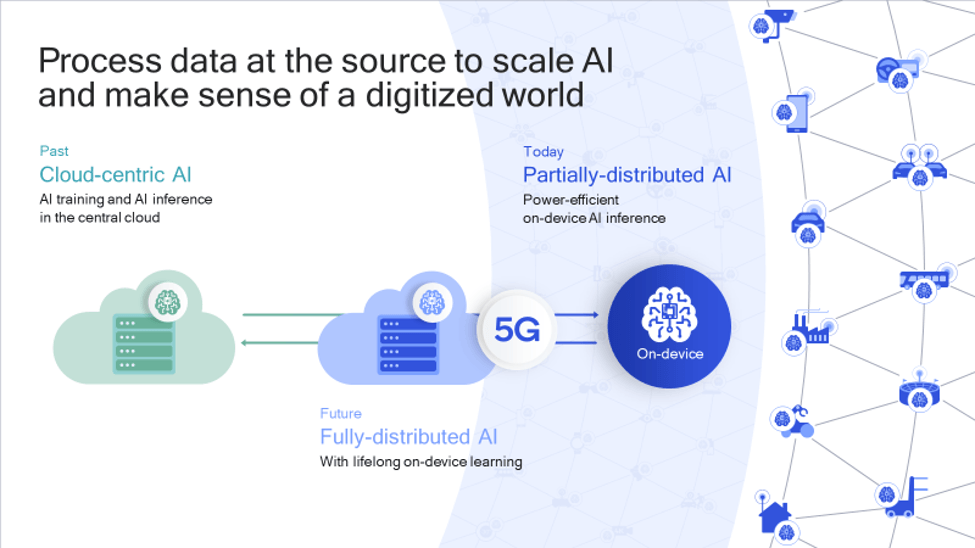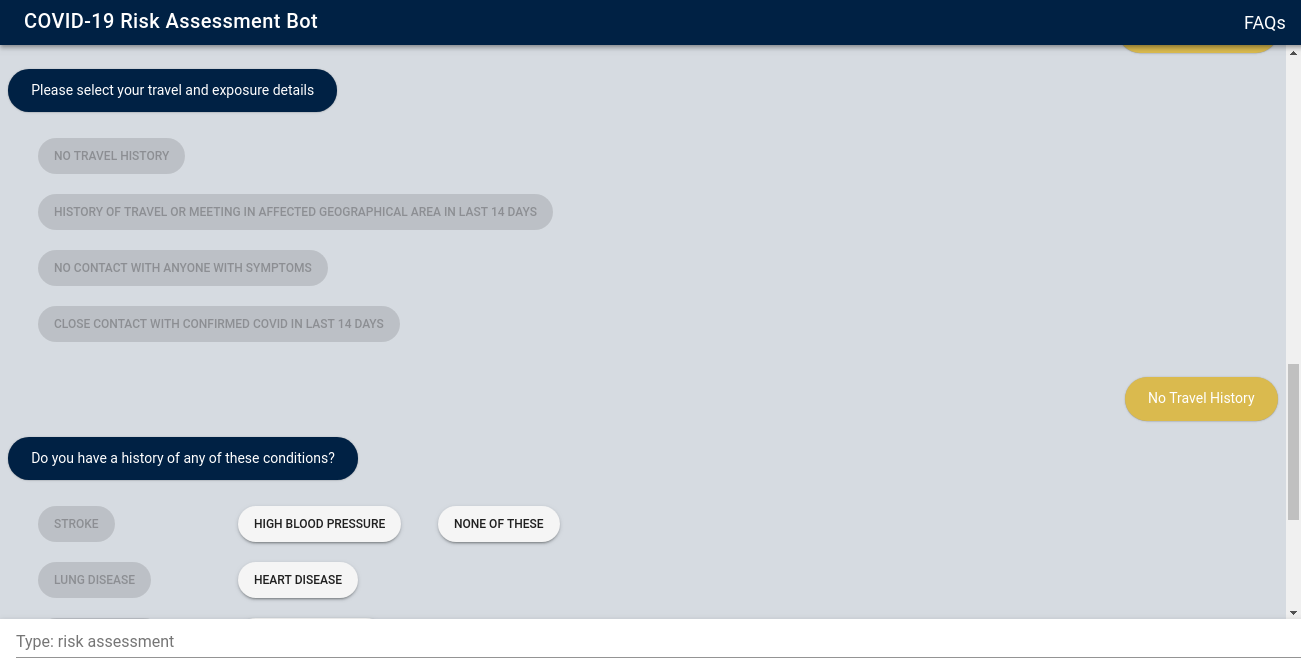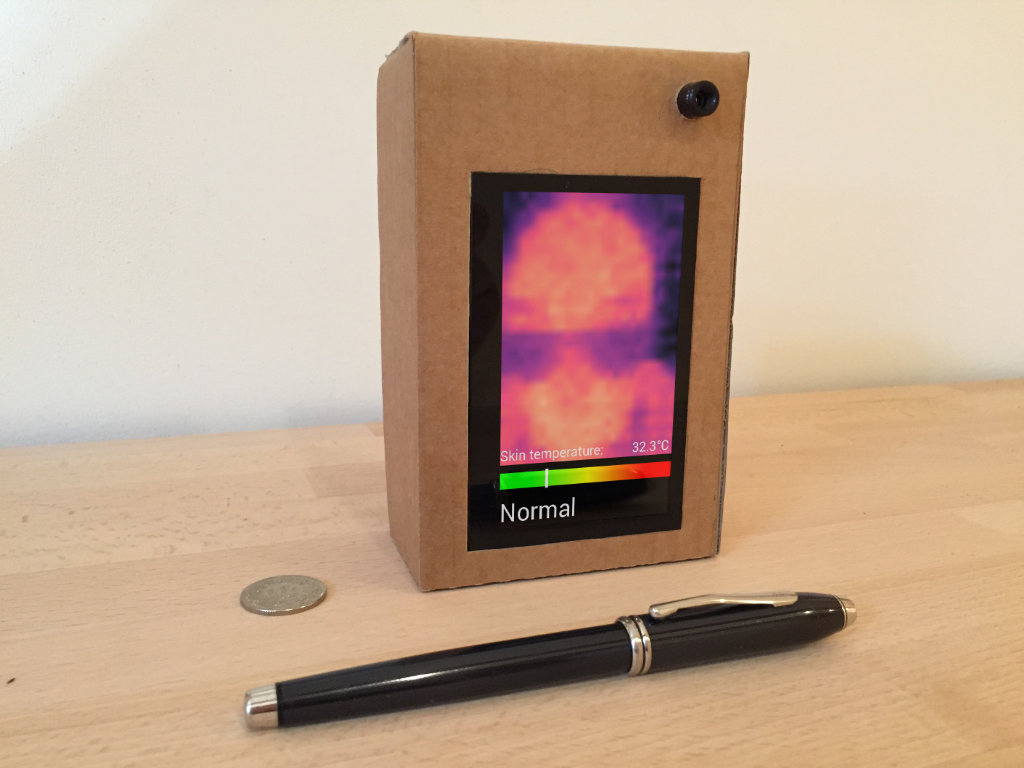Fusing 5G, AI, and IoT for Intelligent Connectivity in the New Normal
Sanam Malhotra | 25th June 2020

The next-generation wireless connectivity 5G has touched the ground to fuel artificial intelligence (AI) with its much-needed data power. Coupled with the Internet of Things (IoT), 5G modules are set to magnify the scope of AI applications across industries. For businesses, the trio of 5G, AI, and IoT will harness intelligent connectivity to improve performance and service quality drastically. 5G’s 10 Gigabits/sec data rate, low latency, and reduced power consumption will push the adoption rate of AI and IoT in businesses further.
In this article, Oodles AI shares how the convergence of AI development services with 5G-infused IoT devices will realize the full potential of business automation.
How 5G, AI, and IoT Will Induce Intelligent Connectivity
Intelligent connectivity will thrive when 5G, AI, and IoT together will connect billions of devices and machines for generating value-driven industrial applications. For this, 5G’s disruptive speed, reliability, and connectivity will be greatly absorbed by AI and IoT through faster data transmission. Intelligent connectivity will, therefore, create a ripple effect with 5G pushing more data rates, IoT demonstrating higher computational power, eventually, machine learning development extracting deeper insights.
Wide coverage of data across business systems, national and international boundaries and institutions will herald several Industry 4.0 applications, such as-
a) Autonomous manufacturing
b) Connected offices
c) Sensor-based security
d) Real-time emergency services
c) Smart payments, and others.
Contrary to the highly-interrupted and expensive Wi-Fi 6 networks, 5G connectivity will provide 50x more speed, 10X less latency, and 1000x more capacity.
It will enable businesses to process huge amounts of unutilized data closer to its source, thereby developing both on-cloud and edge AI applications. Global 5G network provider, Qualcomm suggests that 5G, AI, IoT will create a new computing paradigm. The combination will empower businesses to transfer processed data immediately from devices to the cloud for the in-depth analysis, as shown below-

Also, the giant 5G enabler believes the intersection of 5G, AI, and IoT will give rise to ‘distributed learning’ over wireless devices. It will lead to the development of better privacy, more scalable applications, and highly personalized customer experiences.
Transformative Applications With 5G, AI, and IoT Technologies
Although IoT module suppliers will be the first beneficiary of 5G, we are focusing on the trailing industrial automation use-cases with the trio. According to McKinsey Global research, 5G will stimulate a wave of industrial automation for functions that largely involve cameras, video-streaming, computer vision, and machine learning. Let us explore some of the AI-led enterprise applications that will be significantly impacted by 5G IoT modules.
1) Remote Medical Diagnosis
Until now, the remote medical diagnosis was largely dependent on human-to-human interactions for the exchange of patient health records and treatment. With 5G IoT modules, AI models can autonomously generate, transmit, and process electronic health records to streamline diagnosis across channels.
Especially for remote locations, 5G-infused AI models can make healthcare services more accessible with complete audio-visual and haptic feedback. Rapid information sharing across geographies with 5G will enable doctors to improve healthcare services involving medical images, sensors, and complex data.
5G-powered IoT devices will empower AI to assist doctors in analyzing complex databases while minimizing costs to deliver the following healthcare applications-
a) Remote sensors and monitoring devices for tracking vital signs and glucose levels to alert healthcare providers of potential chronic conditions.
b) High-speed medical imaging of X-rays or CT scans to enable remote patients to receive quick responses from professionals
c) Highly personalized treatment with 5G gathering immense data about patients’ lifestyle, social environment, and genetic composition.

In the wake of growing COVID-19 concerns, we, at Oodles, developed a risk assessment chatbot to analyze remote patient conditions and render quick medical advisories.
2) Deep Video Analytics
AI’s expansive data processing capabilities will be fed by 5G’s seamless video-streaming data to optimize public surveillance and security significantly. Intelligent connectivity through 5G, AI, and IoT will enable government bodies to ensure safer environments, reduce crime rates, and improve emergency services.
In addition, amid the global pandemic, AI-driven video analytics will enable corporate offices, shopping complexes, airports, and other public spaces to enforce precautionary measures, such as-
a) Social distancing
b) Mask covers
c) Contactless thermal screening, and more.

A GitHub project demonstrates how contactless thermal screening through a raspberry pi computer powered by ML algorithms.
Also read- Bracing Shopping Centers with Facial Recognition for Post-COVID World
Oodles AI: The Convergence of 5G, AI, and IoT Technologies
As we embark on a new decade, AI technologies promise greater value for businesses by harnessing smart IoT and next-generation wireless connectivity. At Oodles, we join businesses on their journey to automation while utilizing rich-data sources to build impactful and innovative AI solutions.
We pave the inroads to 5G, AI, and IoT by using advanced analytics tools and algorithms that boost business intelligence with data-driven insights.
More recently, our AI team used IoT sensors such as CCTV cameras to build an automated employee attendance tracking system. Here’s a screengrab of the model-

In addition, our AI and ML capabilities expand to-
a) Personalized eCommerce solutions
b) Automated data capture and extraction with AI-OCR, and
c) Predictive medical analysis
Join forces with our AI development team to gain a competitive edge with disruptive AI and ML solutions.



